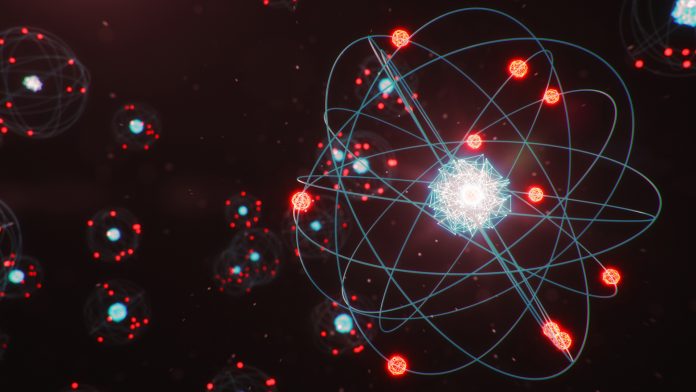Researchers have discovered a fundamental connection between the size of atomic nuclei and blackhole thermodynamic principles.
By utilising a novel method centred on an innovative geometrical interpretation of entropy, a collaborative group of scientists has identified a new technique to calculate the sizes of the nuclei in the helium isotopes 4He, 6He, 8He, assuming only the radius of the proton.
The new method has been outlined in a peer-reviewed paper published in Annalen der Physik.
The microscopic models typically employed by nuclear physicists are complicated and so far have been unable to detect which findings follow inherently from fundamental principles. The area is topical as experiments over the last few decades to measure nuclear sizes – that generally utilise major particle accelerators internationally – have built up an ever more detailed body of data.
Quantitative Geometrical Thermodynamics
A team of University of Surrey-based researchers used Quantitative Geometrical Thermodynamics (QGT), an extremely mathematical method centred around fundamental variational calculus considerations.
This technique has previously been applied with successful results to illuminate the stability of spiral galaxies and the role of their central supermassive black holes, of DNA and Buckminsterfullerene (the C60 molecule). By applying the same black hole physics of QGT to explore the nuclear regime as well, the researchers have now determined its validity over 35 orders of magnitude of length, a wider range than for any other physical theory.
The research focused on the helium isotopes, but similar treatment is also effective for the wider “Helium series” of atomic nuclei 12C, 16O, 20Ne, 24Mg, 28Si, 32S, 36Ar, 40Ca. The research group is hopeful that the same method will result in valuable insights for other nuclei, both stable and unstable. This is anticipated to improve the study and understanding of nuclear structure physics.
Solving a scientific mystery
Professor Chris Jeynes, Professorial Research Fellow at the University of Surrey, said: “In clearing up a fundamental scientific mystery, our findings will lead to critical progress in bringing together quantum mechanics and general relativity. The benefits are immeasurable and relevant in many fields, from knowledge of the universe and understanding of fundamental principles to the development of new drugs and better energy storage.”
Professor Wilton Catford, Research Group Leader of Experimental Nuclear Physics at the University of Surrey, added: “The findings almost seem too good to be true, but we worked hard to identify the conceptual links and consistency with microscopic quantum mechanics and reached an improved understanding. The foundations of our approach lie in the links between entropy, information and symmetry, which are fundamental and apply at all scales, sub-atomic or cosmic.”









